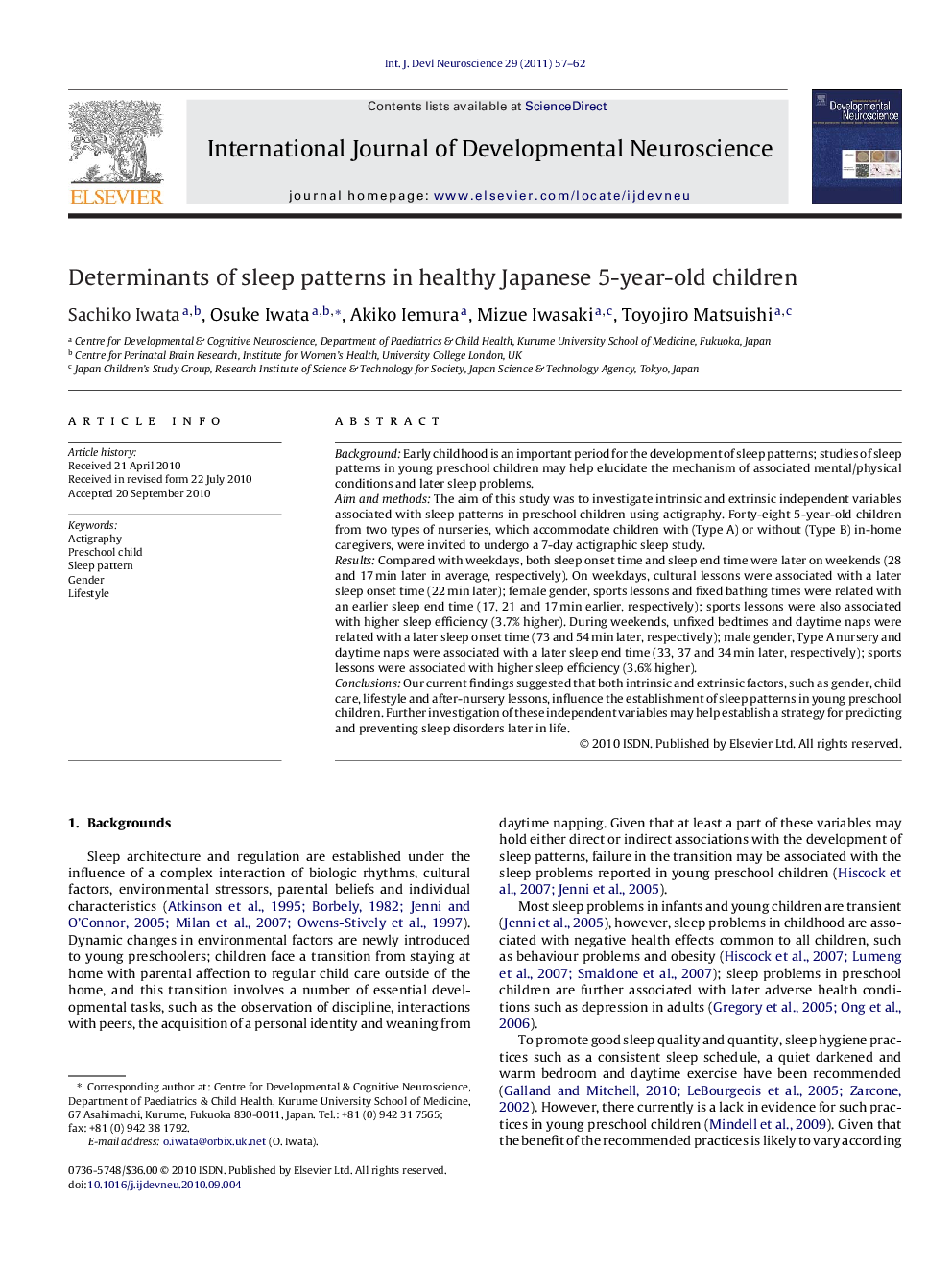| Article ID | Journal | Published Year | Pages | File Type |
|---|---|---|---|---|
| 5893991 | International Journal of Developmental Neuroscience | 2011 | 6 Pages |
BackgroundEarly childhood is an important period for the development of sleep patterns; studies of sleep patterns in young preschool children may help elucidate the mechanism of associated mental/physical conditions and later sleep problems.Aim and methodsThe aim of this study was to investigate intrinsic and extrinsic independent variables associated with sleep patterns in preschool children using actigraphy. Forty-eight 5-year-old children from two types of nurseries, which accommodate children with (Type A) or without (Type B) in-home caregivers, were invited to undergo a 7-day actigraphic sleep study.ResultsCompared with weekdays, both sleep onset time and sleep end time were later on weekends (28 and 17Â min later in average, respectively). On weekdays, cultural lessons were associated with a later sleep onset time (22Â min later); female gender, sports lessons and fixed bathing times were related with an earlier sleep end time (17, 21 and 17Â min earlier, respectively); sports lessons were also associated with higher sleep efficiency (3.7% higher). During weekends, unfixed bedtimes and daytime naps were related with a later sleep onset time (73 and 54Â min later, respectively); male gender, Type A nursery and daytime naps were associated with a later sleep end time (33, 37 and 34Â min later, respectively); sports lessons were associated with higher sleep efficiency (3.6% higher).ConclusionsOur current findings suggested that both intrinsic and extrinsic factors, such as gender, child care, lifestyle and after-nursery lessons, influence the establishment of sleep patterns in young preschool children. Further investigation of these independent variables may help establish a strategy for predicting and preventing sleep disorders later in life.
Research highlightsⶠBoth intrinsic and extrinsic factors influence sleep patterns of preschool children. ⶠNursery attendance led to early sleep onset time and sleep end time on weekdays. ⶠOptimal sleep patterns were related with sports lessons and fixed bathing/bed times. ⶠMale gender, daytime naps and cultural lessons were related with unfavourable patterns.
